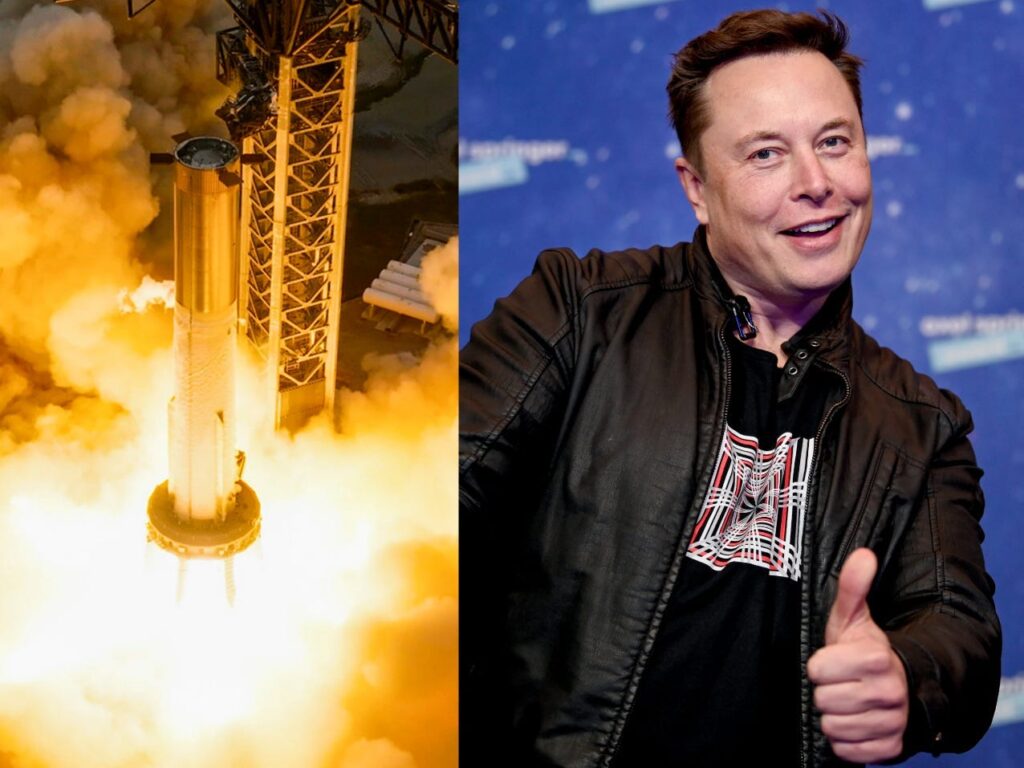- SpaceX is de laatste tests aan het uitvoeren met de grootste en krachtigste raket ooit.
- Volgens topman Elon Musk zal de herbruikbare Starship-raket waarschijnlijk in maart zijn eerste vlucht gaan maken.
- Business Insider belicht 14 dingen die je moet weten voorafgaand aan de lancering.
- Lees ook: Elon Musk zegt dat SpaceX binnen maximaal 10 jaar mensen naar Mars zal brengen
Elon Musk staat bekend om zijn grenzeloze ambities, wat voor obstakels er ook zijn.
De ruimte vormt daar geen uitzondering op. De miljardair heeft zijn doelen hoog gesteld: hij wil de grootste en krachtigste raket ooit lanceren en daar vervolgens mensen mee naar de maan en Mars brengen.
Eerder deze maand kondigde Musk aan dat SpaceX klaar is om Starship in maart de ruimte in te schieten. De megaraket is al 10 jaar in ontwikkeling.
“Als Starship succesvol is, twijfel ik er niet aan dat dit het werkpaard gaat worden dat de mens terugbrengt naar de maan en vervolgens naar Mars”, zegt hoogleraar ruimtevaart Olivier de Weck van het Massachusetts Institute of Technology (MIT) tegen Insider. “Het is niet gewoon een cool raketproject, maar heeft echt de potentie het lot van de mensheid te veranderen.”
Weten wat Starship zo bijzonder maakt? Bekijk dan de slideshow hieronder!
Dit moet je weten over de Starship-raket van Elon Musk
Dit moet je weten over de Starship-raket van Elon Musk
-
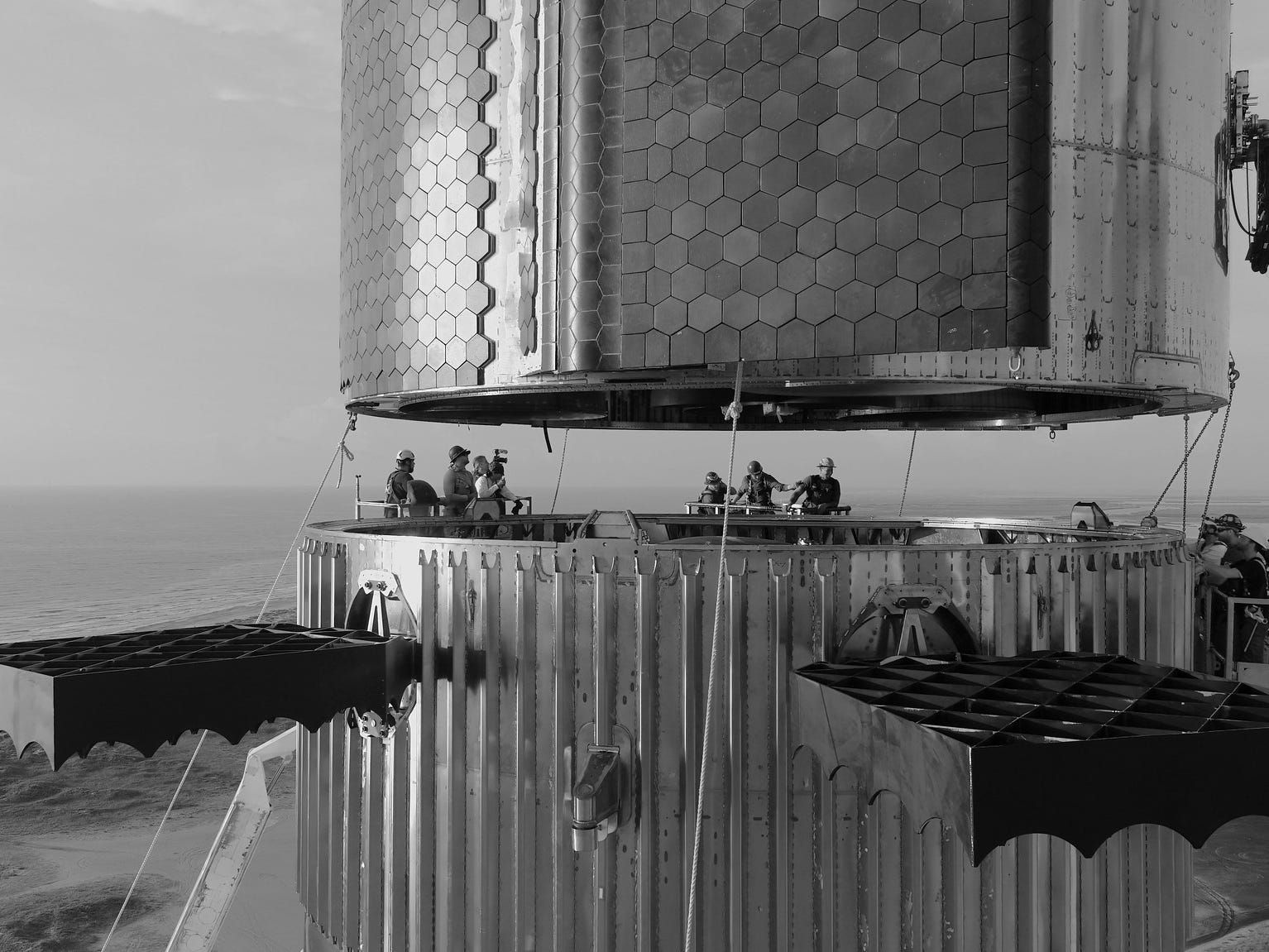
At the height of about 390ft, Starship dwarfs other rockets.
At about 400 feet, the rocket is taller than any other operational heavy-lift launchers.
It's about 30 feet taller than the SLS mega-rocket, which NASA launched around the moon on its Artemis I mission.
Designing a rocket of this size is quite a feat of engineering, de Weck said.
"A rocket that's twice as big is about eight times as challenging to build and test and fly than rocket half its size," he said.
SpaceX
-
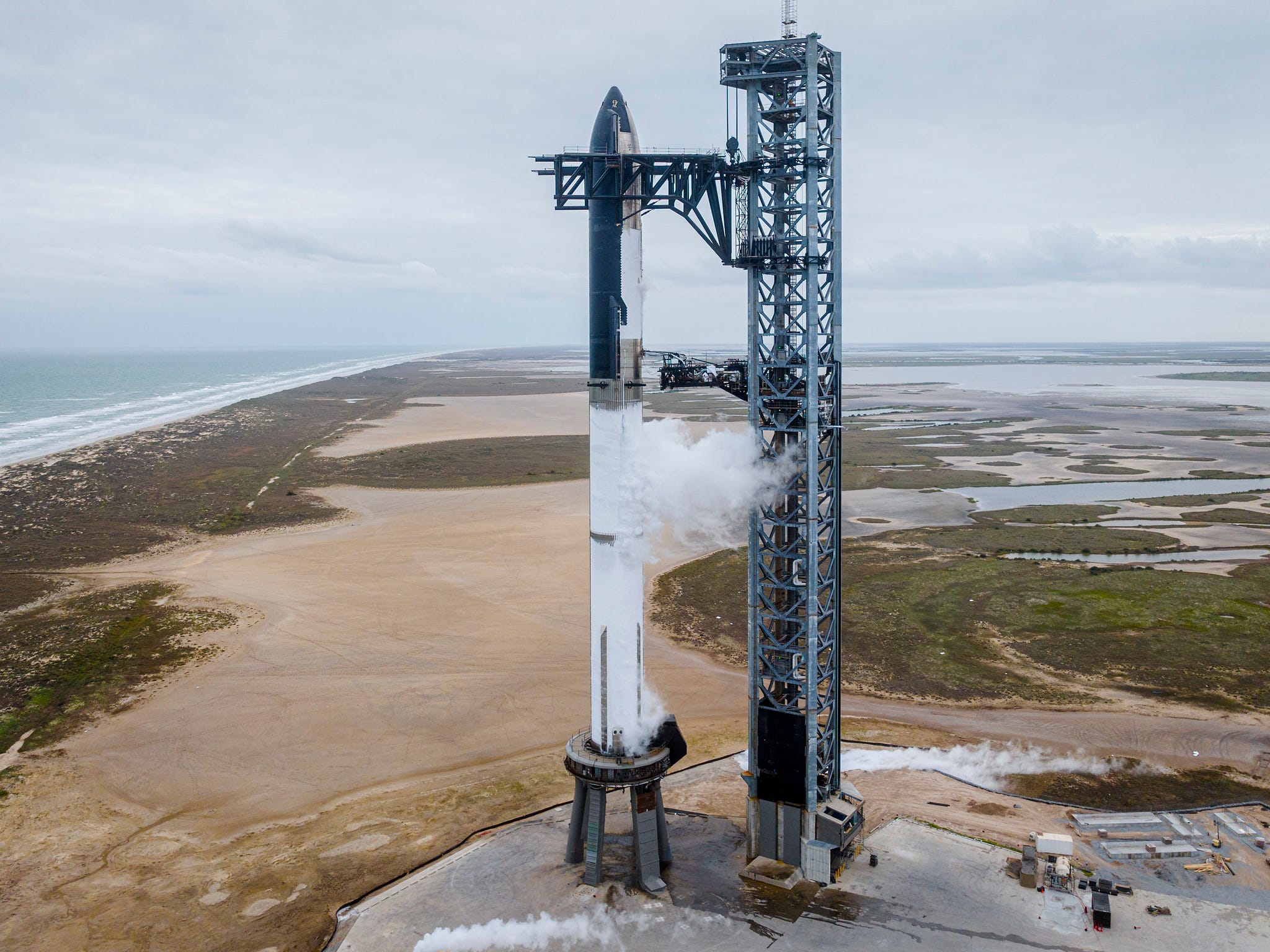
It's not only the tallest rocket ever created, but also the most powerful.
SpaceX wants Starship to be the most powerful rocket ever made.
Technically speaking, Starship is the name of the spacecraft, which sits on the top of the rocket.
The bottom part of the rocket is a booster, called "Super Heavy," which packs a real punch.
Thanks to this booster, the rocket generates about 17 million pounds of thrust. That's twice as powerful as NASA's SLS mega-rocket booster, which has 8.8 million pounds of thrust.
The rocket should be able to lift up to 250 metric tonnes of payload into orbit, 150 if the rocket is used in its reusable form, per the SpaceX website.
SpaceX
-
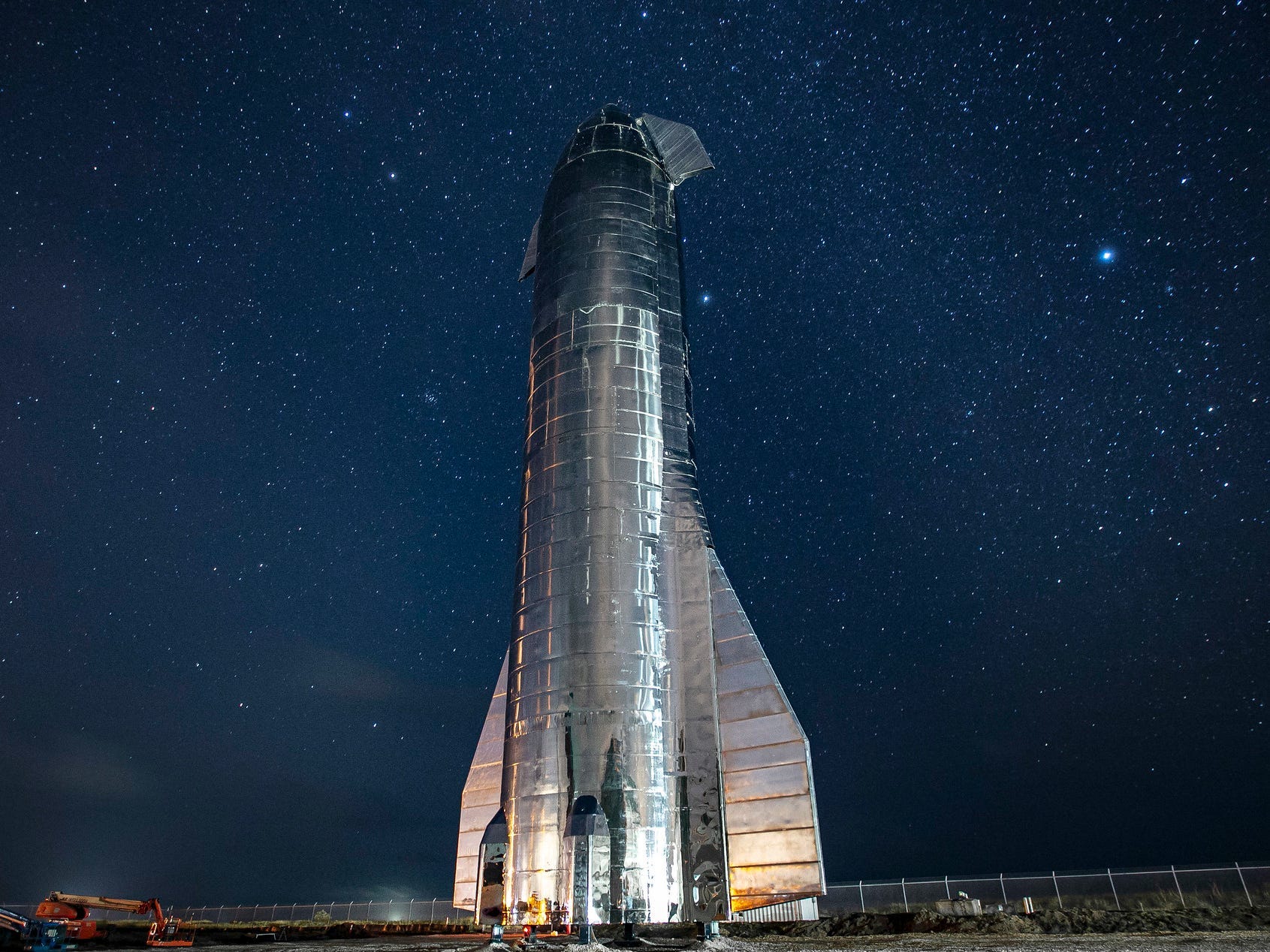
Starship is designed to be reusable.
Musk believes that reusable rockets are the future of space travel, allowing companies to cut down on costs and time with every launch.
But Starship is designed to be the world's first fully reusable rocket, meaning both the booster and the spaceship should eventually be able to come back to Earth intact, ready to be used again.
SpaceX
-
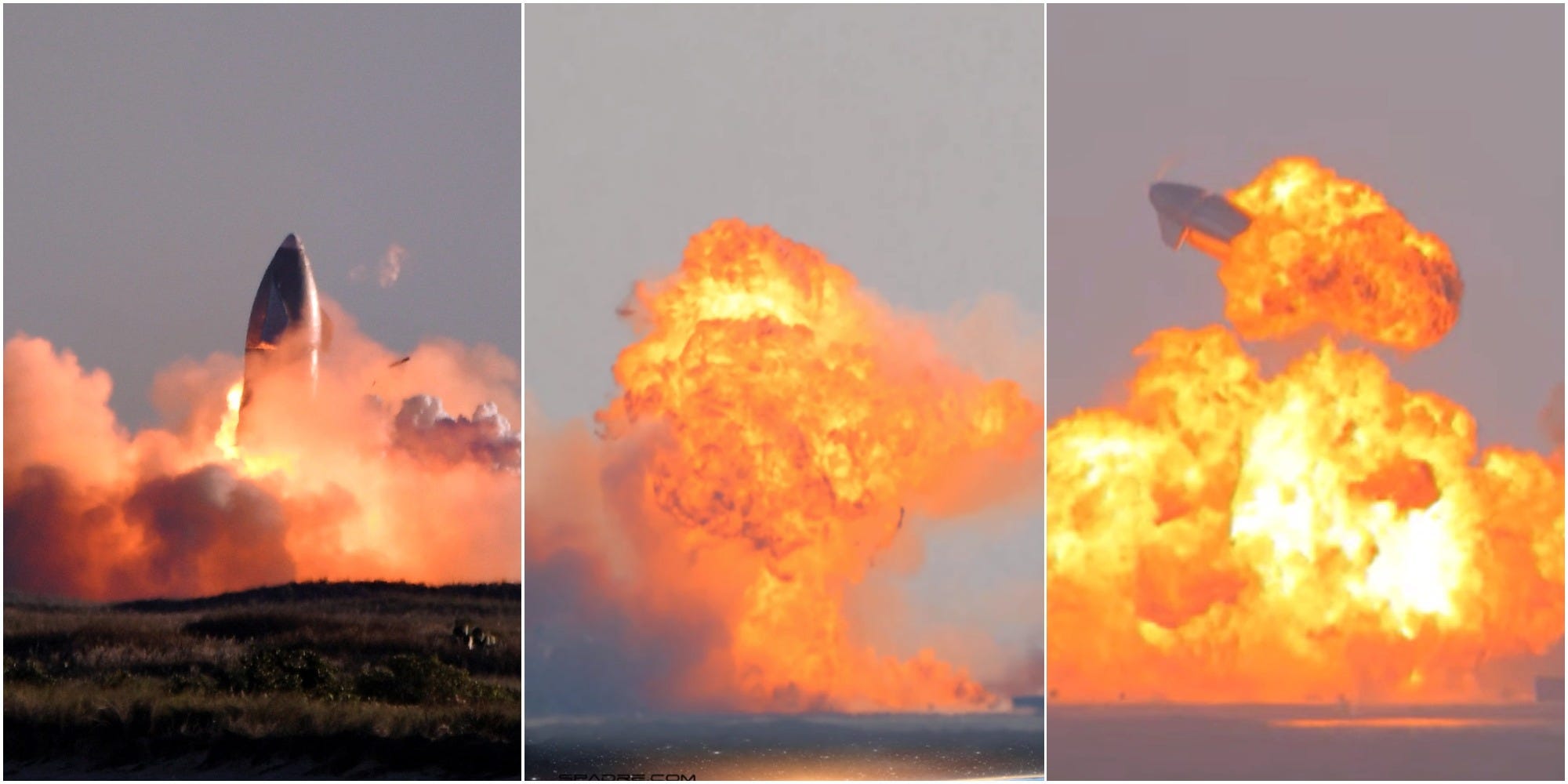
In 2021, SpaceX landed a reusable prototype of Starship successfully.
SpaceX had a breakthrough in 2021 when it managed to land its fifth Starship prototype, called SN15, successfully.
One of the previous prototypes had landed in one piece, but blew up dramatically just 10 minutes later.
The Starship that launched and exploded on Thursday was the first to travel on top of its booster, Super Heavy.
Gene Blevins/Reuters; SPadre.com
-
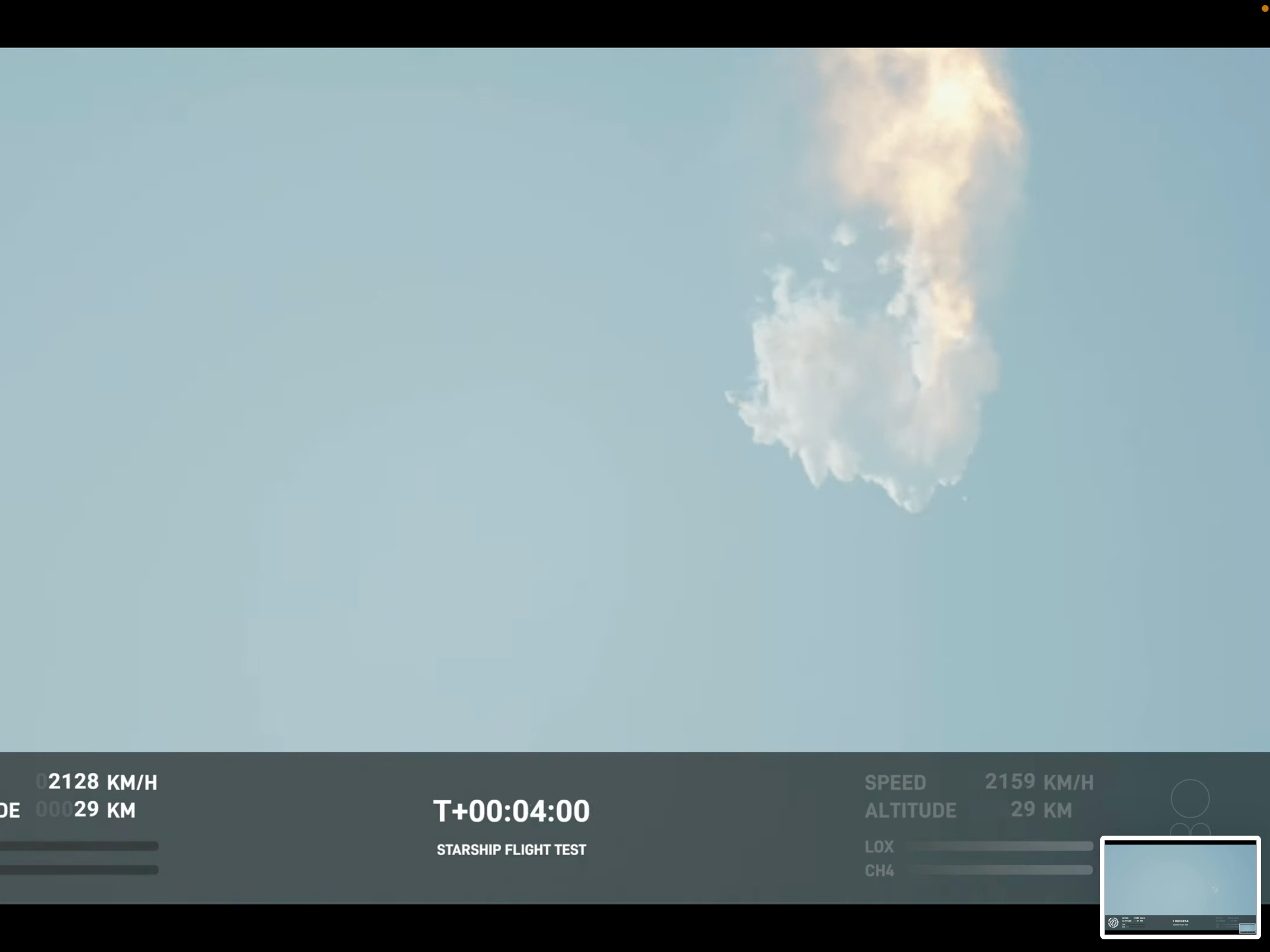
The rocket blew up on its first test flight in April.
SpaceX launched Starship on its first fully integrated flight on April 20.
The rocket lifted off successfully but did not reach orbit as the spaceship failed to separate from its booster around the three-minute mark.
SpaceX detonated the rocket mid-air.
SpaceX
-

The rocket blew a hole through its launchpad and sprayed concrete over neighboring towns
Shortly after the launch, people in the neighboring Port Isabel, Texas, reported sand and soil raining down from the sky.
The force of the rocket's blast also blew a hole in its launchpad.
Following the launch, the FAA grounded the rocket while it carried out a procedural "mishap investigation" into the events.
LabPadre/YouTube
-
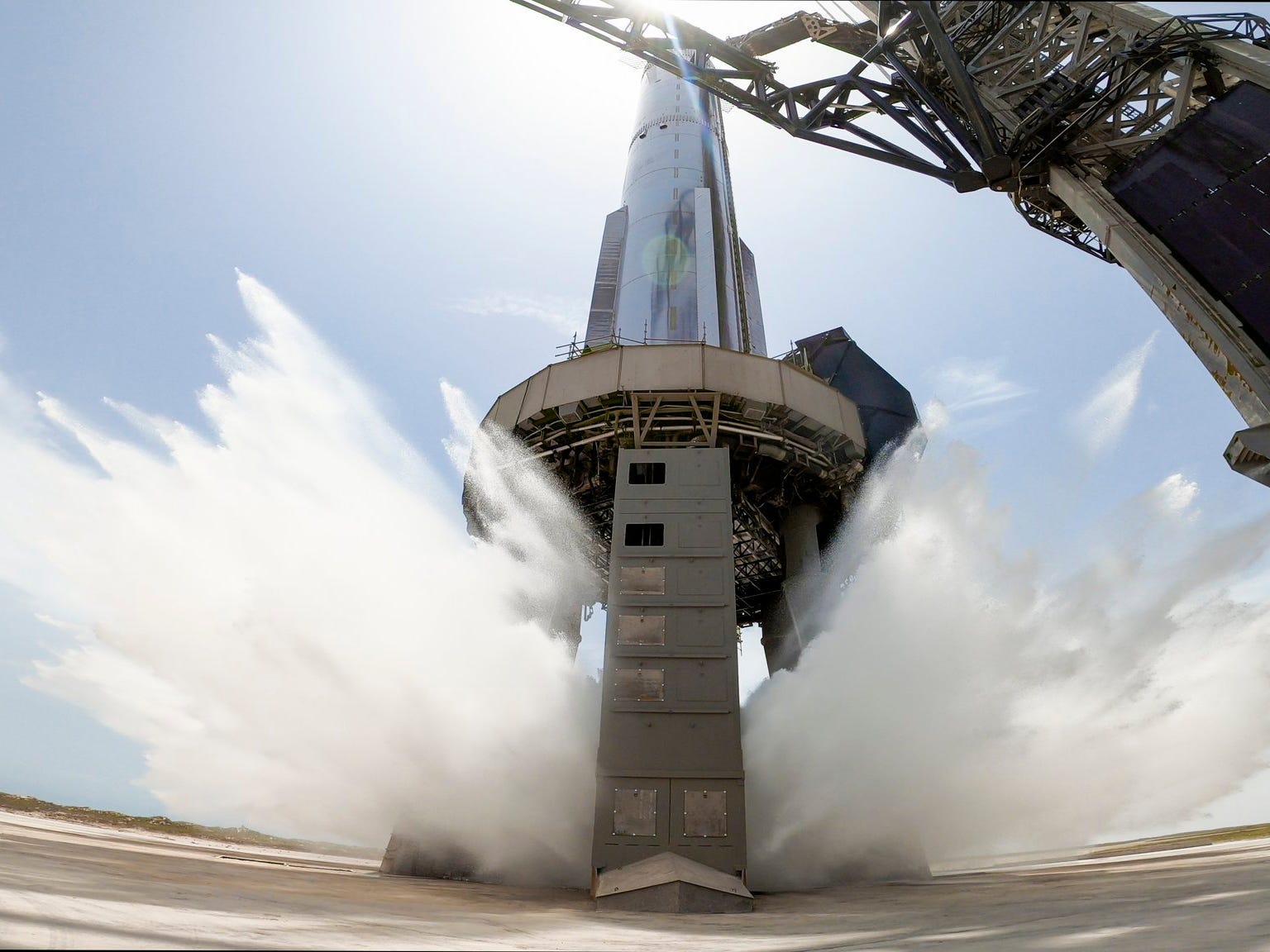
SpaceX has made modifications to the rocket and launchpad
Since the last test flight, there have been "more than 1,000 changes" made to the rocket, Musk told journalist Ashley Vance on June 24, per Space.com.
These include the roll-out of a water deluge system that floods the launch pad to avoid it being damaged during the launch. You can see this in action below during a recent test below:
—SpaceX (@SpaceX) July 28, 2023
SpaceX has also tweaked the way the rocket will separate from the booster. The rocket will now ignite its engines to separate from its booster. To protect the booster from the flames, SpaceX has rolled out a vented heat shield that will separate the two stages.
For now, however, the rocket remains grounded. The FAA confirmed last week that SpaceX had filed its mishap report.
"That review is ongoing," FAA officials said in an emailed statement to Space.com.
SpaceX
-
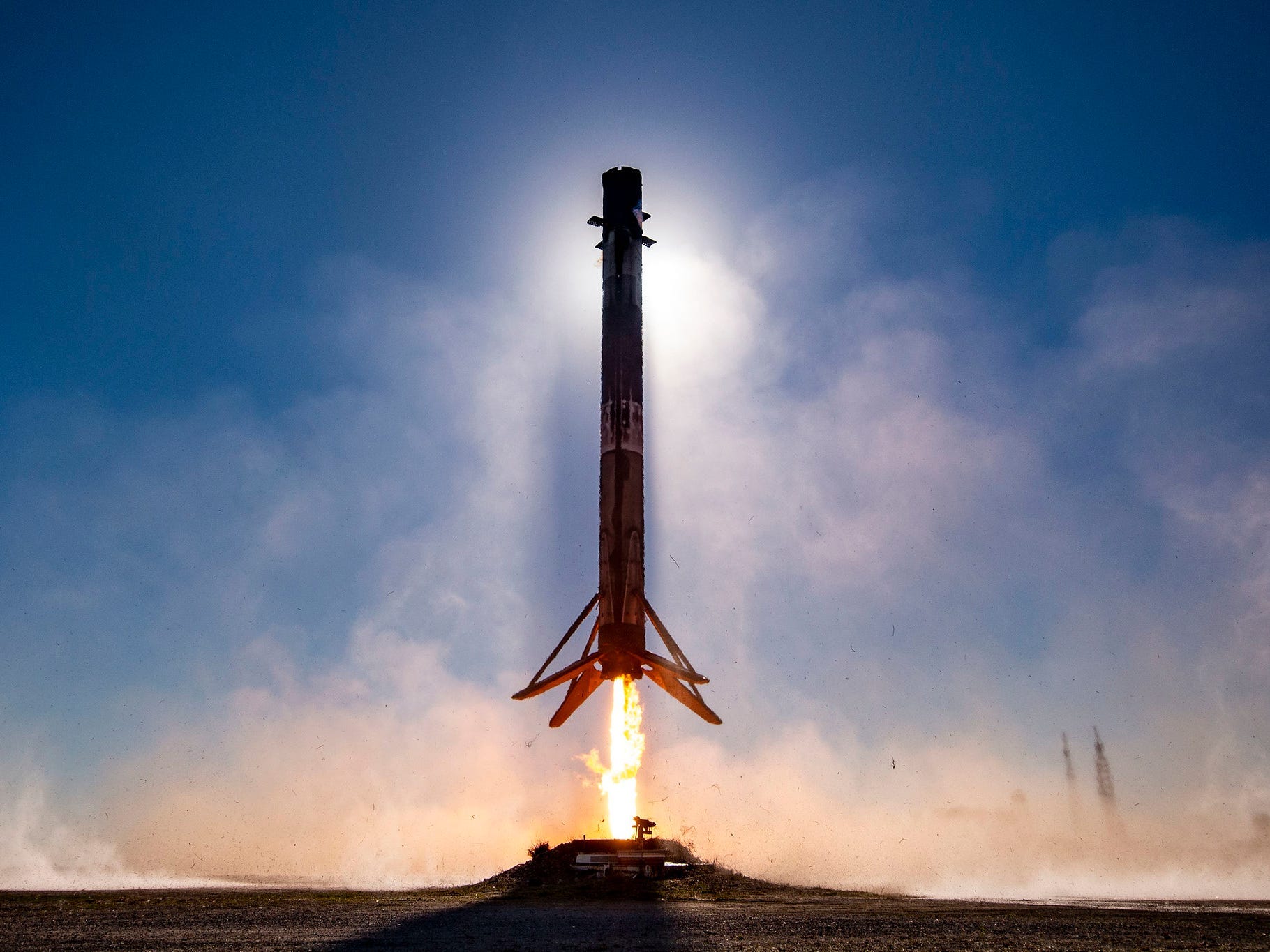
SpaceX wants Starship's booster to be reusable as well.
SpaceX also aims for the Super Heavy booster to land safely on Earth and be used again.
That should be less of an engineering challenge. SpaceX has launched many partially reusable rockets. It can recover the boosters from Falcon 9 and Falcon Heavy rockets, for instance.
SpaceX
-
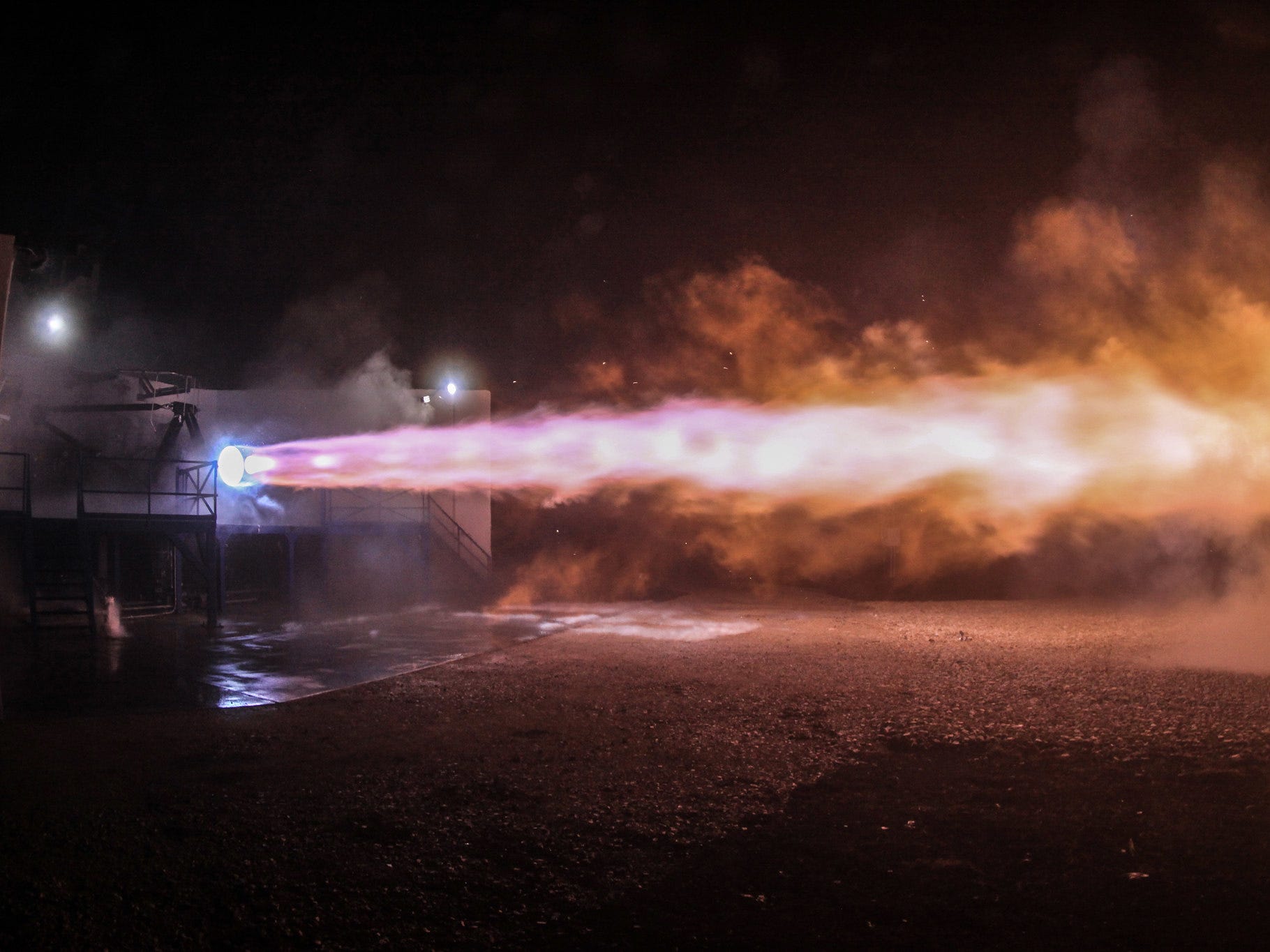
The rocket's incredible thrust is due to its trademark Raptor engines.
Starship's mammoth thrust comes down to SpaceX's Raptor engine.
Every one of the 10-foot-tall engines generates about 500,000 pounds of thrust.
These engines use a fuel called methalox, a combination of methane and oxygen, to push themselves forward.
This is a very different type of fuel from SpaceX's other rockets, which use a combination of kerosene and oxygen, or NASA's SLS rocket, which is fueled by oxygen and hydrogen.
"That is not a combination of propellants that we have a lot of experience with," said de Weck.
The advantage of using this fuel is two-fold, he added.
Methane, as a molecule, contains a lot less carbon than kerosene — one carbon atom for methane versus 10 to 16 for kerosene.
Practically, that means that burning methane makes a lot less soot than kerosene, which is useful for an engine you want to reuse.
The other advantage is that it's easy to imagine how you could make methane on Mars to refuel the rocket.
"You need CO2, which is available from the atmosphere of Mars. You need water, which exists on Mars in the form of subsurface ice deposits. And you need energy. So of course you need a chemical plant," said de Weck.
SpaceX
-
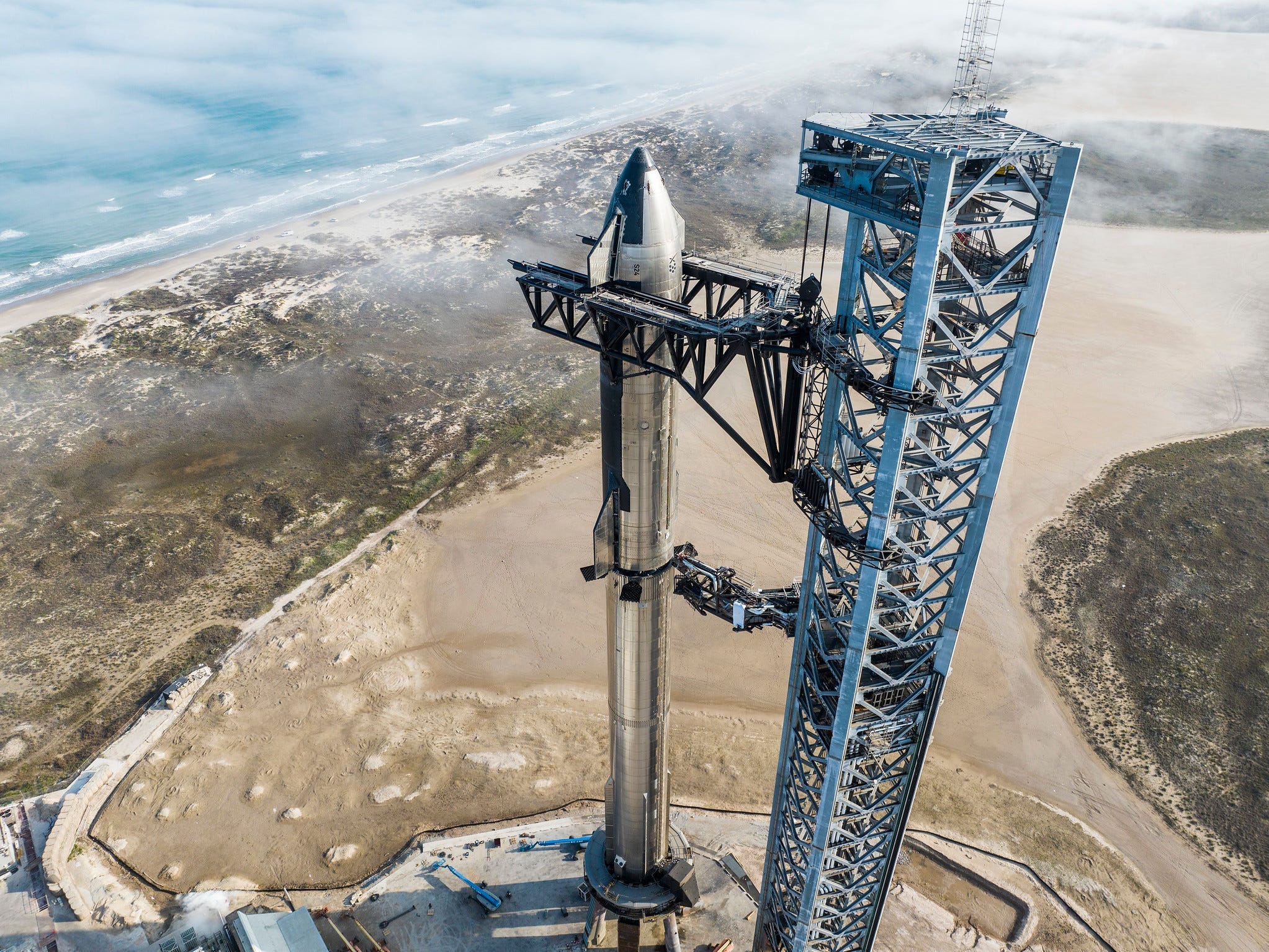
Starship makes clever use of stainless steel, a metal long considered to be too heavy.
Unlike other rockets, usually made of aluminum, Starship's body is mostly made of stainless steel.
Using stainless steel can sound counterintuitive — after all, it's a heavy metal, about three times as dense as aluminum.
But there are a few reasons steel was the right choice.
One was the price — wholesale steel is a lot cheaper than aluminum.
The second is strength. "Steel is much, much stronger than aluminum," said de Weck, so you can make the parts a lot thinner than with aluminum. In the end, the parts turn out lighter.
The third is corrosion. Because these rockets are made to be reusable, they need to stand the test of time. Steel is much better at doing that.
SpaceX
-

The Super Heavy booster contains 33 Raptor engines.
—SpaceX (@SpaceX) February 9, 2023
Each booster contains 33 Raptor engines, so a lot can go wrong when you try to fire them.
"That's the big challenge is getting all these 33 engines to light simultaneously."
"Even if each engine has a 99% probability of working properly, the probability that all 33 will fire at the right time and it is not that high," said De Weck.
In fact, during the rocket's first test flight, SpaceX operators said four of the engines were not firing.
Roscosmos Space Agency/AP
-
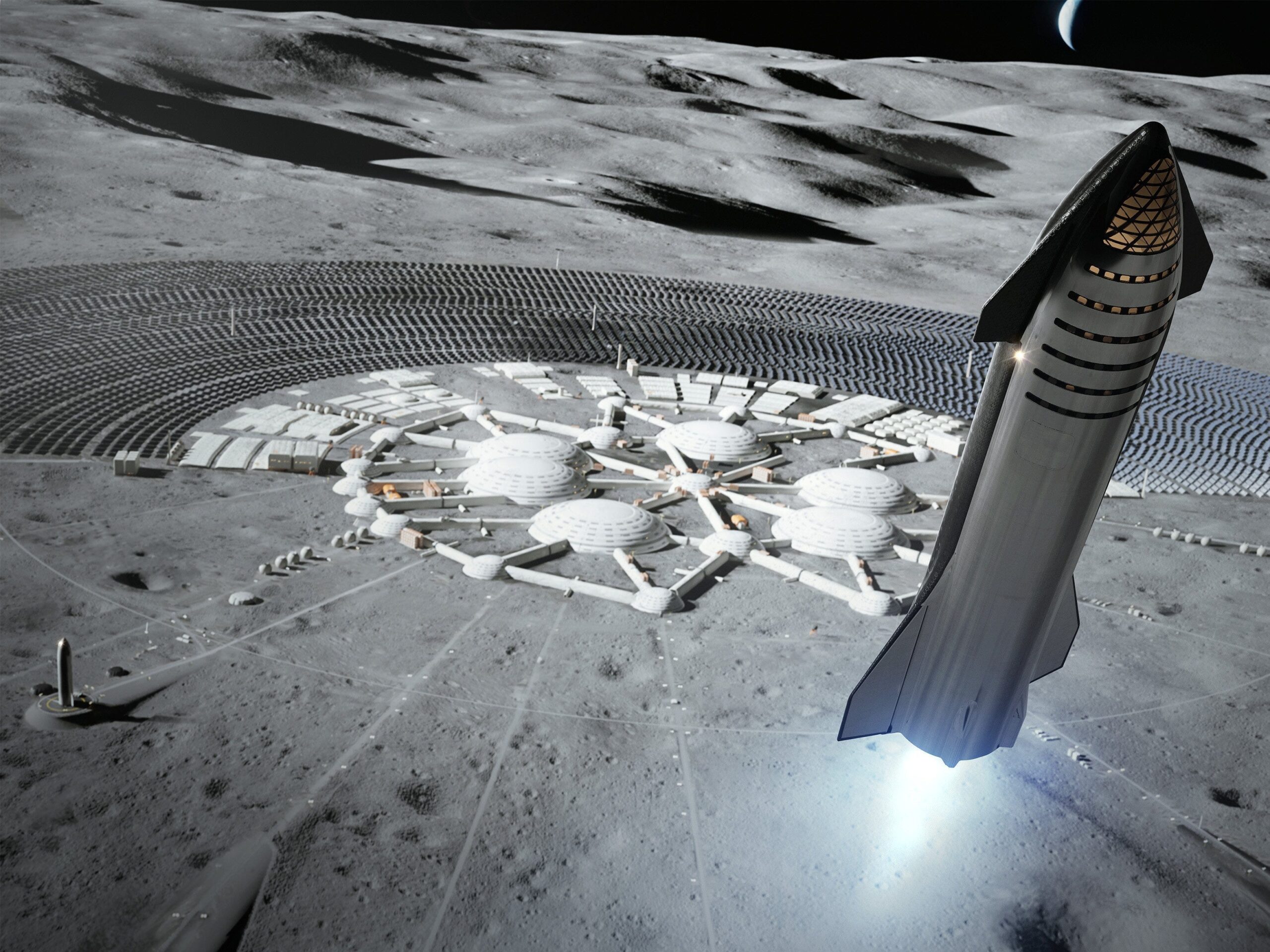
NASA has teamed up with SpaceX to use Starship in future crewed missions.
SpaceX's success is crucial to NASA's upcoming Artemis missions to the moon.
NASA awarded SpaceX two multibillion-dollar contracts to use Starship as part of their crewed missions to the moon.
The plan is NASA's own SLS rocket to bring astronauts from the orbit of the moon, and for a Starship to rendezvous with the SLS to carry the astronauts down to the lunar surface.
SpaceX/Twitter
-
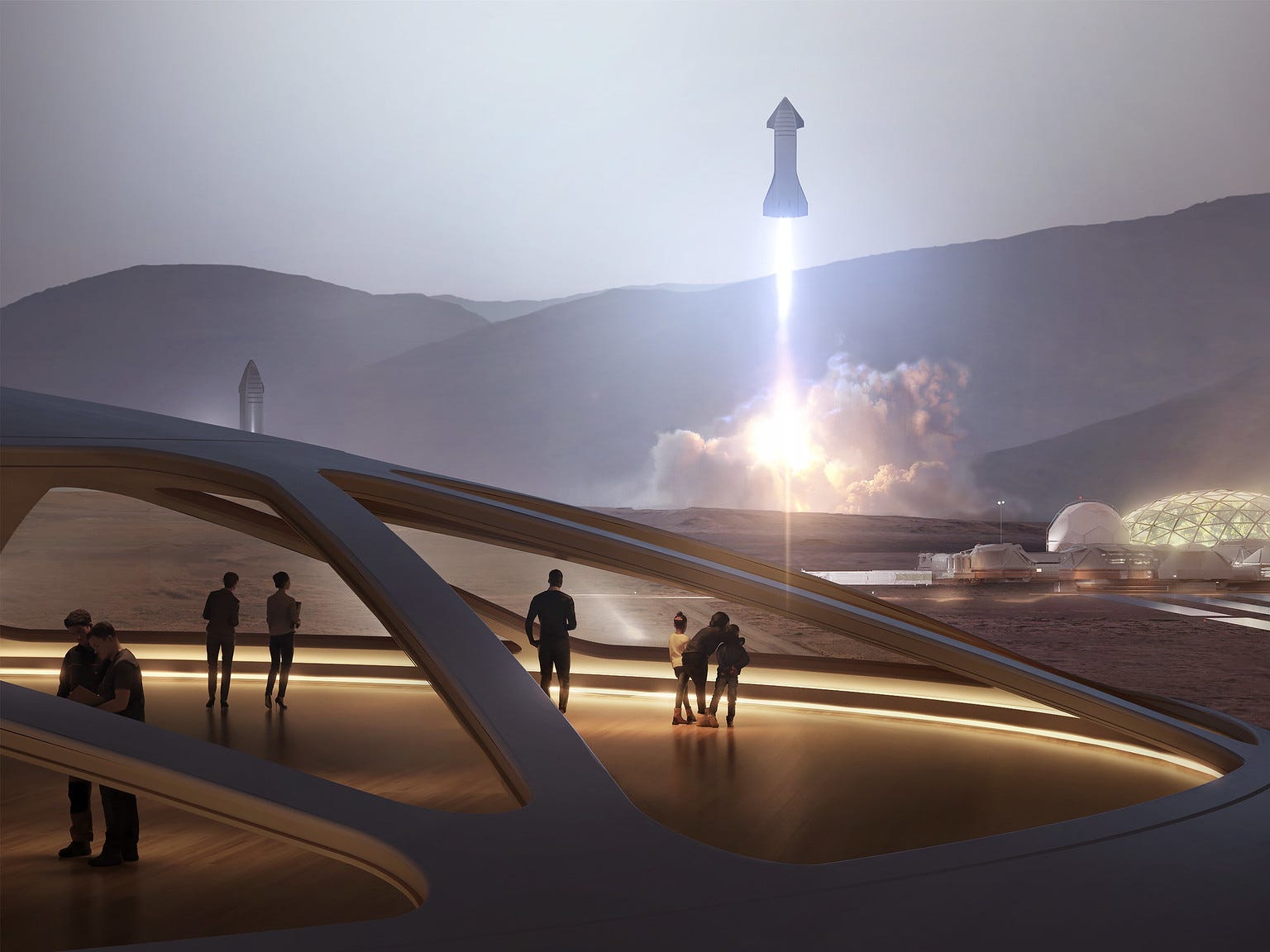
Musk wants Starship to take the first colonists to Mars.
The moon isn't the only object on our solar system that Musk wants to visit.
SpaceX aims to carry humans all the way to Mars on this launcher.
Musk predicted this could happen within the decade in a tweet in February.
"I must admit to being congenitally optimistic (SpaceX & Tesla wouldn't exist otherwise), but I think 5 years is possible and 10 years is highly likely," he said.
SpaceX
-

Starship also plans to fly around the moon, with a Japanese billionaire on board.
SpaceX has also scheduled civilian-crewed missions on Starship. It is due to carry Japanese billionaire Yusaku Maezawa and a team of eight people of his choice.
Maesawa's crew will include artists, content creators, athletes, a K-pop star, and a DJ.
The mission, dubbed "dearMoon" by Maesawa, is due to take the team around the moon, about 200 kilometers from the moon's surface.
Roscosmos Space Agency/AP
-
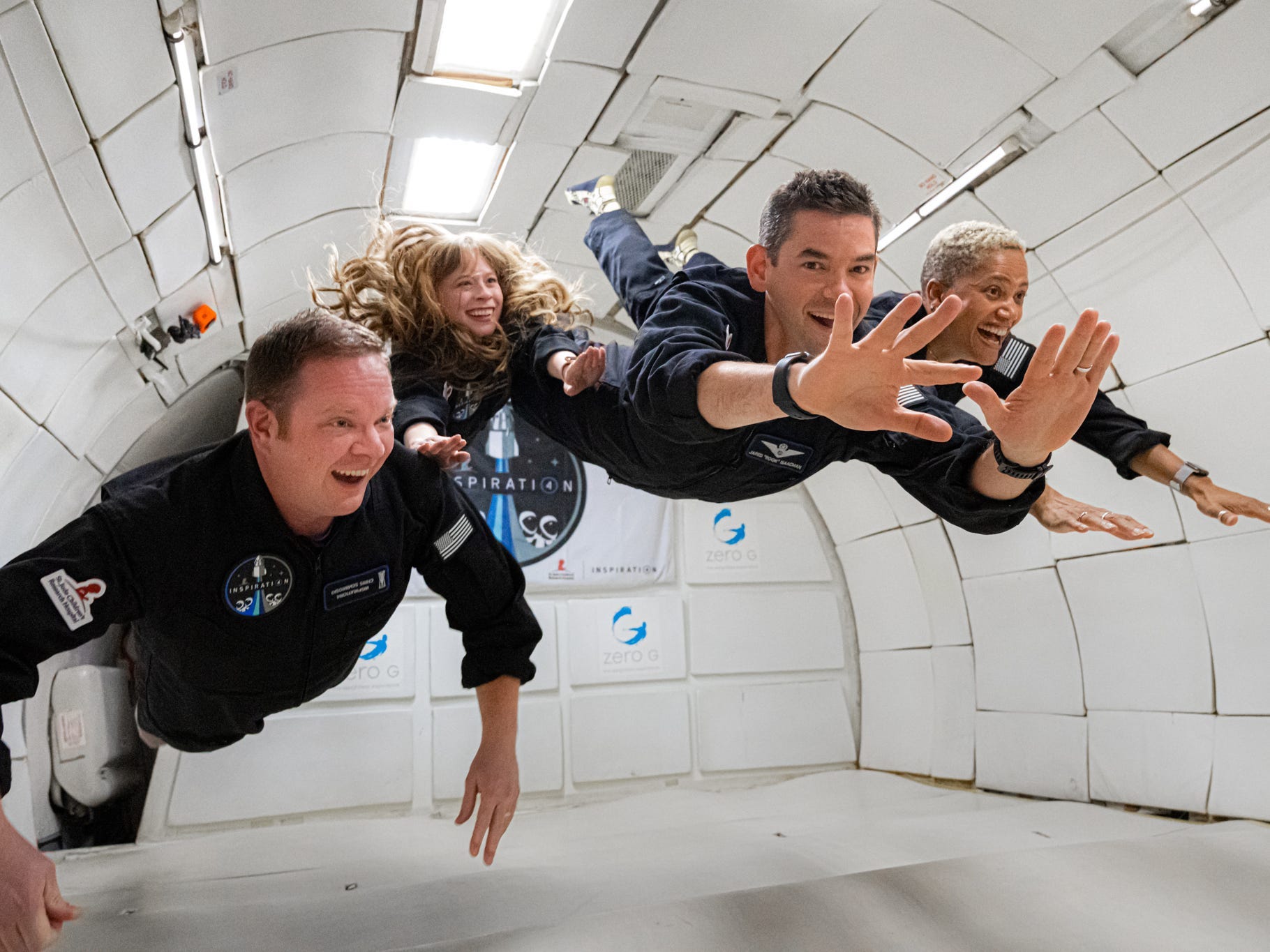
The rocket could one day be used to cross the world in 30 minutes.
Musk also plans for Starship to be used for Earth-to-Earth transport.
"With Starship and Super Heavy, most international long-distance trips would be completed in 30 minutes or less," says the SpaceX website.
De Weck said it sounds "probably doable, but maybe not so good for the environment."
De Weck wrote a paper last year about the growing risk of the space industry releasing more greenhouse gas emissions.
Starship's fuel is made up of methane — which is a potent greenhouse gas, much more potent than CO2 if it's not burned up before it's released into the atmosphere.
Inspiration4/John Kraus
-
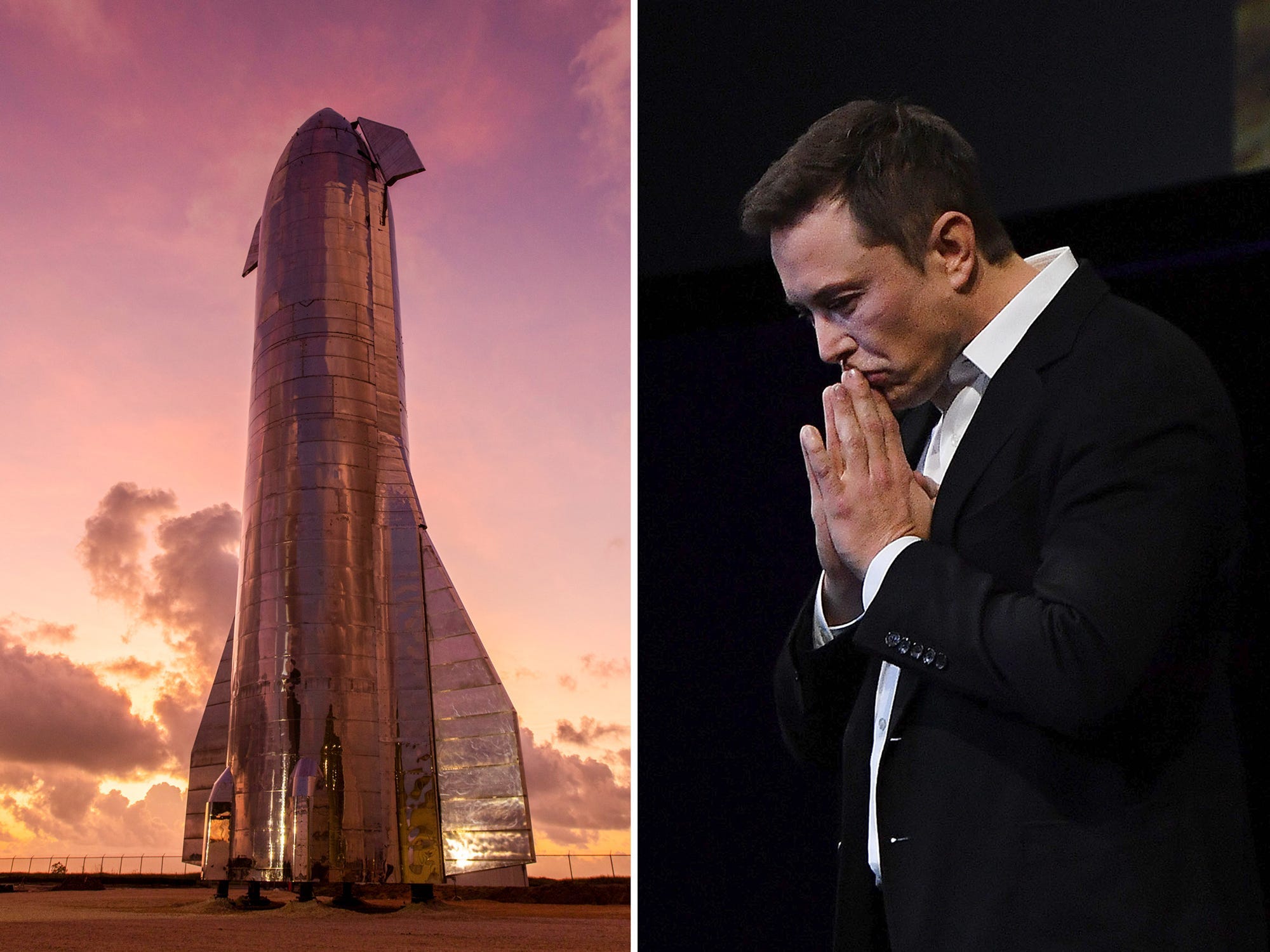
Musk had given the last launch 50% chance of success.
Musk had hinted that Starship's first launch could end in some fireworks.
"I'm not saying it will get to orbit, but I am guaranteeing excitement," he said in an interview at the Morgan Stanley Conference on March 7, adding: "Won't be boring!"
"I think it's got, I don't know, hopefully about a 50% chance of reaching orbit," Musk said.
Ahead of the first launch, De Weck called for people not to jump to conclusions too quickly.
"Let's keep in mind that this is just one test out of hundreds. And if anything, SpaceX has shown us that they learn a lot from failures," he said.
Musk foreshadowed in March that should anything happen to the first rocket, here are several other Starships waiting in the ring.
He then upped the probability of success for a future launch to 80%.
Correction: February 14, 2023 — An earlier version of this story misstated the Raptor's thrust. It generates 500,000 pounds of thrust, rather than 500 pounds of thrust.
This post has been updated. It was originally published on February 13, 2023.
SpaceX; Mark Brake/Getty Images; Business Insider
